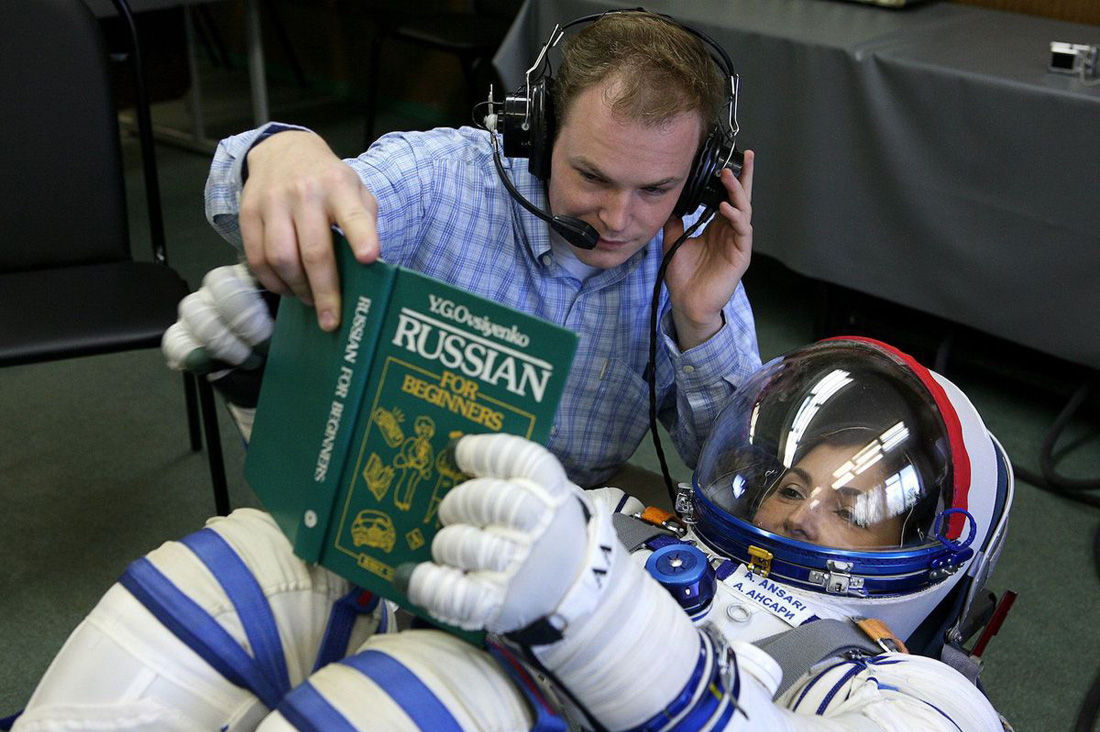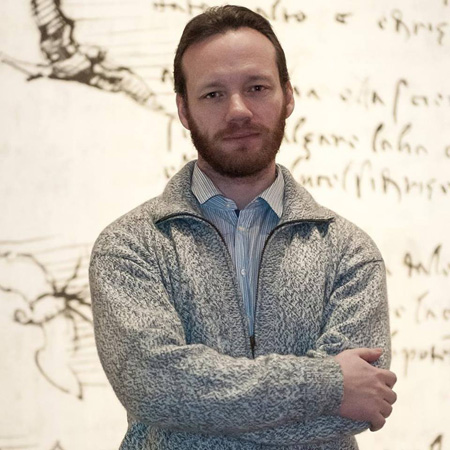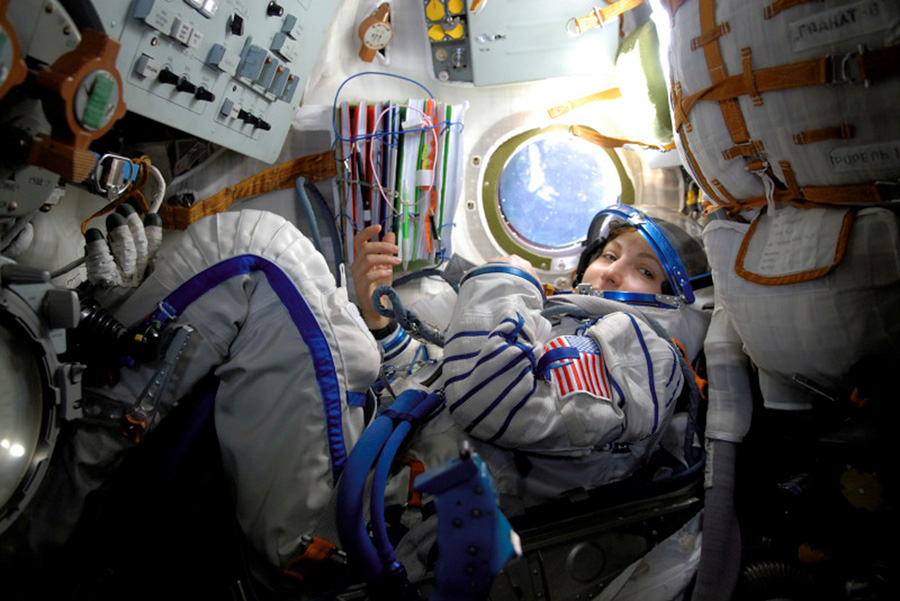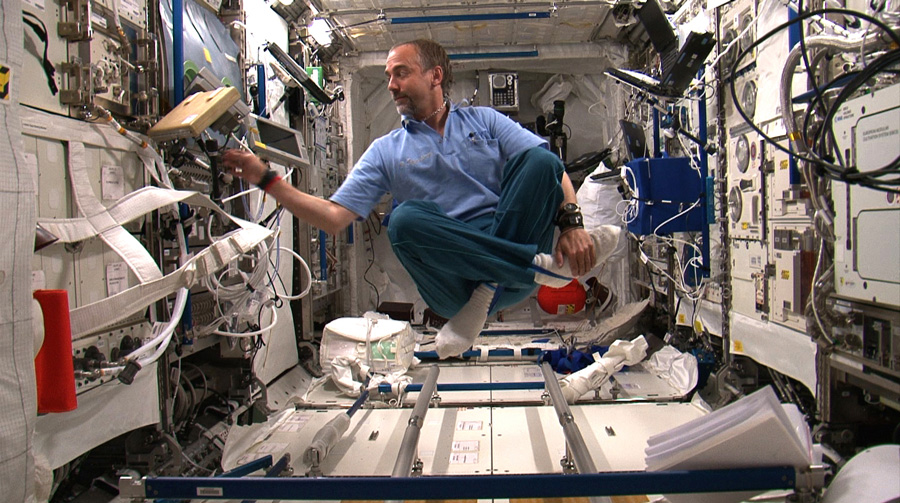Space Tourism Experience

Today you can often hear about space tourism: private companies create rockets and rocket planes, which should deliver everyone to space. However, until all the launches of non-state cosmonauts carried Roskosmos. In the 2000s, seven people visited space paying a tour of the ISS under a contract with the company Space Adventures, which acted as a tour operator, on Russian ships. Today's guest of the blog is Denis Shapiro , who was involved in organizing flights at the Russian office of Space Adventures.

Denis, you worked for many years in space tourism, tell us how space tourism started and how many tourists were there?
The first flight of the space tourist took place in 2001. He was organized by the American company Space Adventures in collaboration with Roscosmos.
I must say that so far, despite the many different statements about space tourists from Ilona Mask or Richard Branson, Space Adventures is the only company in the world that already has a similar experience. It is important that all flights were organized on the Russian segment of the International Space Station (RS ISS), i.e. Russia is a pioneer in this field.
And the first space tourist was an American businessman Dennis Tito. His flight cost 20 million dollars.

In total, so far eight space flights have taken place with the participation of tourists. They call themselves the private explorers of the cosmos - it sounds much more significant and more beautiful, in my opinion. So, there were only seven private space explorers. One of them is an American of Hungarian origin, Charles Simoni, he is also called the father of Word and Excel, because his department at Microsoft was engaged in developing applications for the office, flew into space twice.
In general, the very idea of space tourism is not new at all - as early as 1967 Barron Hilton and Eric Kraft reflected on this topic, but it didn’t go further than ideas about space hotels in the mid-60s.
You say that the flight was organized on the ISS RS, does this mean that the tourists could not be in the segments of the partners in the Station?
The contract to stay on the ISS was indeed drawn up on the Russian segment of the Station, but on the ISS there are no such borders as on Earth and, of course, the tourists freely moved throughout the Station, but the main part of their life activity, experiments, and accommodation were on the Russian segment. Accordingly, almost all the training took place in Russia in Star City and in the Energia Rocket and Space Corporation, the launching and landing were also carried out by Russian rockets and the Soyuz spacecraft.
Generally speaking, from what stages is the work of preparing a space tourist?
In general, first the future space tourist must also be found. This is done by a whole department that implements various marketing strategies for finding customers. There are a lot of talks about tourism and those who want to fly, but we must understand that at this stage of development it is a very difficult task.
Firstly, the future participant of the space flight must meet all medical requirements, otherwise he will not be allowed even to train, no matter how much money he has. Just imagine: overloads in a centrifuge reach 8G - this is not a completely healthy body that simply will not survive. I must say that the requirements for tourists are somewhat less than for professional astronauts. I think this is due to the fact that the flight is very short-term and takes only about 10-12 days. For example, one of the flying space tourists Richard Garriott didn’t qualify for the NASA astronaut because of his vision problems, despite the fact that his father, Owen Garriott, is a famous astronaut and scientist! Many years have passed, and his dream of flying into space has remained, and with the advent of space tourism, it has become a reality.
Secondly, the preparation itself takes about six months. And this time will have to spend in Russia. And this, too, you see, is not easy - to take yourself out of your usual life for half a year, leave your family, friends, and work and devote yourself completely to preparing for a flight into space. True, some space tourists brought with them a film crew, a PR director, an IT specialist, and several assistants.
I will return to your question - after the contract with the future space tourist has already been signed, after all the necessary medical commissions have been passed, it’s very conditional that all the work on organizing a space flight can be divided into several large blocks.
The first stage - it can be called “Logistics”.
It is necessary to organize all the flights of the future space flight participant and his team. Consider their accommodation and all movements within the country, departure to the start and landing, provide for obtaining the necessary visas of Russia and Kazakhstan (start and landing take place on the territory of Kazakhstan). If there are scientific experiments in the program, then consider obtaining all necessary permits from the authorities for crossing borders, etc.
The second big stage is “Learning.”
Training takes place in the Cosmonaut Training Center. Gagarin in Star City. It is also quite a long, difficult, but very interesting process - after all, for a successful, wealthy person who is used to leading, including and huge teams that have not sat at the desk for a long time, to go to the students and take exams is also a serious challenge. Those. space tourism is not just paid a lot of money and flew into space is a serious and responsible preparation, which depends not only the life of the tourist, but also the safety of the crews of the ship and Station.
By the way, apart from handling non-standard and emergency situations, survival trainings, etc., the training in addition to the various systems of the ISS and the Soyuz spacecraft also includes learning the Russian language - this is also an interesting point.

The third big stage is “Flight preparation”.
Even with the usual trip, the tourist should think over exactly what things he will take with him on the trip and what he will do during the trip. Roughly the same thing happens with the space tourist. Already six months before the start, we must clearly understand what the future participant in space flight will be doing in space. And this, in turn, means a full understanding of what he will have to take with him to the Station and lower down to Earth during landing, what scientific experiments he will conduct and what will be needed for this. And all this in the conditions of the most severe limit on the permissible mass, and the mass of things down is three times less than the permissible mass when going up.
The fourth conditional stage is the flight into space itself and the maintenance of this flight from the Mission Control Center (MCC).
And what exactly did you do?
To a greater extent, I was conditionally involved in the third and fourth stages - this is the organization of the space flight itself: the planning of a scientific program and the support of a flight in the MCC. Of course, more than one person is engaged in this - the whole teams of RSC Energia and the Control Center, who are responsible for the safe and successful flight, are engaged in this. Our task is to combine the space tourist program with all the requirements for a safe and productive stay at the Station.
How does this happen?
This part of the training usually begins with a large meeting of all interested parties at RSC Energia. Let me just briefly list the specialists who are usually present at such meetings, so that the scale of the work is immediately clear. So, usually such events are attended by: representatives of the contract department, planners, scientific program, safety, fire safety and gas emission, cargo flow planning, software specialists, board documentation, space suit and overalls, photo / video specialists , on amateur radio, on customs, on food, etc.
With all these high-class professionals, we must fully coordinate the entire future program of the space tourist's flight.
I will give one more example. Gone are the days when the space tourist flew only with a camera. I am speaking now about orbital tourists, and not about future suborbital tourists, who will only fly to the boundary of space for 5-10 minutes to experience weightlessness and take photographs. So, all private space researchers have a desire to carry out their scientific program and realize their space experiment. Of course, each experiment will have its own curator, a special set of documents in English and Russian will be developed. The forms of all these documents have already been established and meet certain requirements, and only their volume for each experiment will be approximately more than 200 pages. It must be said that this is only a necessary narrative part, without which the realization of an experiment in space is impossible,
And after all the equipment and documentation are ready, acceptance tests will be conducted, the experiment will be included in the flight program and agreed with the Station partners. In general, there is usually enough work!
What do you think is the main specificity of such “space” work?
The main feature of our work is very clear planning. And the most important word for us is DEADLINE (deadline). All stages have their own duration and sequence, and we with all our desire cannot change it in any way. When organizing a space tourist's flight, we find ourselves in a very well-established mechanism for training and preparing for flight, and if we don’t have time to complete any process by a certain time, then even technologically we cannot complete all necessary preparations for the launch day. And then everything is very simple: the rocket will fly away and there will be no one to wait. Therefore, the entire preparation period is very tightly planned: Start Day - (minus) 180 days, Start Day - 179 days, Start Day - 178 days, etc. before the flight into space, and then the flight itself and the landing, processing the results.
What problems did you encounter and how were they solved?
I would not call it problems - rather, some tasks that need to be solved calmly throughout the preparation.
I'll tell you just a couple of cases.
For Space Adventures, all space tourists are first and foremost VIP clients. And this, in turn, implies a high level of work with them. Of course, the future participants in space flight are adequate people and are ready for various difficulties to make their dreams come true, but sometimes it is very difficult to explain things to them that are absolutely clear to all Russians.
For example, in Star City, as elsewhere in Russia, hot water is turned off in the summer. And it was not easy for me to explain to the multimillionaire that now there will be hot water only in two weeks and that it is impossible to buy a company that supplies hot water to the Town. At the request of our client - we booked a room at the Hyatt Hotel, there was hot water there all the time.
In fact, there are always many difficulties in preparing a flight into space that must be overcome on-line. In the program of Richard Garriott was a scientific experiment on the crystallization of proteins. All equipment for it was manufactured in the United States, in the laboratory of the University of Alabama. Chemicals were supposed to be frozen and delivered to Russia by plane. To be honest, then for the first time we were faced with the fact that it was necessary to obtain the necessary permits from several organizations at once: Rospotrebnadzor, Phytosanitary Control, Drug Control and Customs. The main difficulty was that we were limited in time and had no idea when they would give us all the permissions! But, no matter what, coped with the task and the experiment took place.

If we talk about the future, how do you see the development of space tourism?
At the very beginning of the conversation, we recalled Barron Hilton and Eric Kraft and their reflections of 1967 on the construction of space hotels. On the one hand, what else can a person with the surname Hilton talk about, if not about hotels, and on the other, these reflections can now finally begin to be realized.
Let's see where astronauts and astronauts can now be in space? Only on the ISS and that's it! But at the same time, Russia is developing the Federation spacecraft, NASA is designing the Orion spacecraft, SpaceX is preparing a manned version of the Dragon ship, another ship is being made by Boeing. Somewhere it will be necessary to fly on all these new spaceships!
The ISS has been flying in space for 20 years and its resource is limited, which means that new orbital stations and space bases will inevitably begin to appear, which will be located on the nearest satellites and planets, where not only professionals, but also private space researchers could fly. And this, in turn, will work on the diversity and development of the cosmonautics of earthlings as a whole!
Speaking globally, the resource of planet Earth is also limited. After hundreds of millions of years, the Sun will warm so much that life on Earth will disappear - so that mankind will simply have to learn to live with the time in completely unfriendly conditions of space. And for this you need to start building space hotels and colonize other planets, send spacecraft to search and explore other planets, develop new technologies. It will be an invaluable experience!
Of course, suborbital space tourism will also develop, but this is more entertainment and drawing attention to the very theme of space.
Now all of humanity is only taking the first steps out of our common cradle. After all, in fact, people were not yet in space beyond the moon - the closest satellite of our planet. The very same International Space Station flies at an altitude of only 400 km from Earth. In this regard, it seems to me that space tourism with the construction of hotels outside our planet, the creation of conditions for the participation of private business in the development of astronautics, and international cooperation are important and absolutely necessary steps for our common earthly progress and, I hope, successful future!
What do you think should be done to increase the number of tourists and ease their way into space?
At the present time, when all the new ships that we talked about have not yet been built, and the Russian Soyuz spacecraft is the only means of delivering astronauts and astronauts into space, it is not necessary to wait for any qualitative changes. Speaking in a simple way, there are currently no empty seats in the ships.
But if you look a little into the future, then, in my opinion, first of all, you need to change the attitude to space tourism in general. On the one hand, it is still entertainment for the rich, but on the other hand, there are new opportunities for realizing interesting ideas, receiving investments in the industry and, of course, attracting the attention of international media to our cosmonautics as a whole - after all, the launch of a ship with a space tourist on board always attracts the interest of all international media agencies. It seems to me that the advantages are obvious!
It is also very important that a unique positive experience in working with non-professional astronauts has already been accumulated - the flight of a space tourist is no longer a secret behind seven seals, but a fully worked out scheme, i.e. for future private space explorers, there is no need to invent anything again - it only remains to get more flight capabilities!
